I created a homebrew setting for my current campaign. My favorite campaigns are, without fail, the ones where I make my own setting. The sense of ownership and authorship I have over the setting makes it so much easier for me to get invested in the story being told. Plus, it lets me tailor elements of the setting specifically to the stories that I want to tell. You can tell amazing stories with published settings like Eberron, Wildemount, and Theros, and these pre-made settings can save you tons of hours of work—but they also ask you to put in the time to read them cover to cover a couple of times to internalize the lore.
Everyone has their own preferences, but I want to encourage you to try making your own personal campaign setting at least once. I’ve made five or six campaign settings over the ten years I’ve been DMing games of D&D. Two of them were thinly-disguised remodels of the Sword Coast that I transposed published adventures to. When I ran Princes of the Apocalypse in my personal campaign setting of Tymor, I made it so that the setting was of roughly Eberron-like levels of magical technology—but the catch was that all of this technology was predicated on the capture and ultimate consumption of elemental spirits from the Inner Planes.
This setting conflict raised the stakes of the adventure, and allowed me to give Vanifer, leader of the Cult of Eternal Flame, a sympathetic motivation by turning her into a well-intentioned extremist abolitionist who was preyed upon by the apocalyptic power of Imix. She eventually got a redemption arc—and started working towards achieving her goal of freeing the elementals being consumed to power Tymor’s technology… just without ending the entire world in Imix’s cleansing fire.
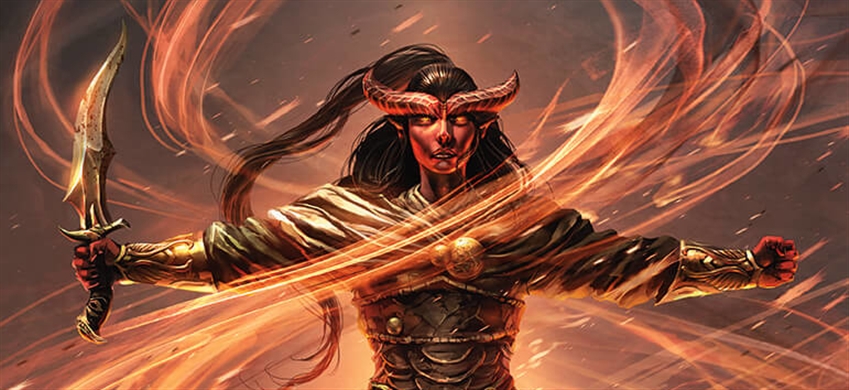
That’s just one way that creating a homebrew setting—even one that’s just a published setting that you’ve changed 10% of to suit your needs—can breathe unexpected life into your D&D campaigns. Check out previous articles in our series on worldbuilding:
- Worldbuilding with Style and Subtlety
- Worldbuilding through Encounters
- Worldbuilding with Legendary Monsters
Get Your Players Involved
In my Princes of the Apocalypse campaign, I tailored a pre-existing campaign setting to my needs by adding details that helped the setting support the story I wanted to tell. In my current campaign, I made a new setting from scratch. Why? In this game, I wanted to create a wholly original plot rather than running a pre-made adventure. And when I run original campaigns, I go to great lengths to have my players inform the plot. If they have backstories, I explore them for characters I can use as villains. If they don’t have backstories, I think about their characters’ personalities and desires to create villains that can serve as foils—either by being diametrically opposed, or by being a mirror that reflects the darker side of their own ambitions.
And to serve this goal of bringing the players’ characters to the forefront, I always try to work with my players to create the setting. Worldbuilding together with your players is a remarkable thing, because it can help solve a lot of problems all at once.
- You don’t have to come up with as many ideas. It can be exhausting coming up with enough cool ideas to populate an entire continent’s worth of world! Brainstorming ideas with your players gives you loads of free material.
- Once you’ve created a world’s worth of ideas, there’s no guarantee that your players will care about any of them. Brainstorming ideas together helps ensure that your players are personally invested in the world from the very start, since they helped create those ideas!
- Since your players helped come up with the world, it’s easier to make plot threads you create seem personal to the players. Saving a random town is a boring act of altruistic hero work, but saving a characters’ home town turns that rote adventure into a desperate struggle with stakes that feel real!
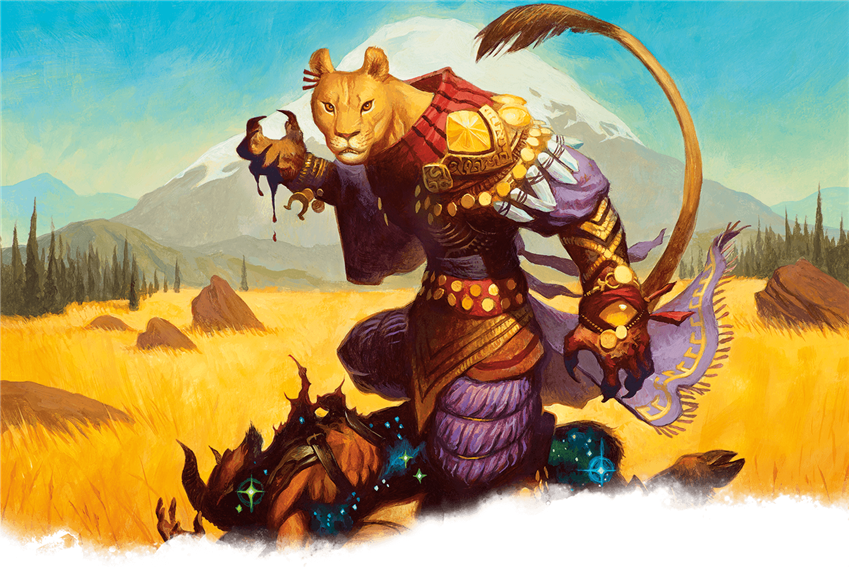
Start with a Structure
If you go to your players and just say, “Help me build a fantasy world!” you’re probably going to get a lot of blank stares. Maybe someone else in your group is secretly a fellow worldbuilding buff and you two will go off and brainstorm together for hours, but let’s be honest, that’s a pipe dream. Every writer fears the blank page. It’s your job as the DM to facilitate good storytelling. You’re not the only storyteller at the table, because everyone in a D&D game is a storyteller. But it’s your job to give your players the support they need to tell stories in a fun and safe way.
That starts with giving them structure.
In my current home game, I started by making a rough map showing two landmasses. One eastern land, one western land, separated by a wide sea with an island in the middle. Together, these lands made “the Continent,” the yet-unnamed land where the game would take place. I knew I wanted a setting that was reminiscent of the ancient Mediterranean, where a dozen different cultures traded, warred, politicked, and intermingled, creating a diverse, volatile, and highly exciting land rich with story potential. So I made the characters’ home base on that little island in the middle, a neutral ground where all nations came to trade and negotiate.
Then, around that central island, I divided the two landmasses into five nations of roughly equal size, plus the central island. These were their descriptions:
- Pristine forest realm; no large cities, home to highly insular elven enclaves
- Temperate realm of feuding states; Holy Roman Empire vibes
- Mountainous snowy nation; high levels of magical technology, home of artificers
- Declining colonial empire transitioning into a major mercantile power; climate and culture inspired by Portugal
- Sweltering tropical nation, waging a war of conquest against its former colonizer; now a major naval power; environment like American bayous with Caribbean coasts
- Central “Isle of the Dawn,” a major hub of trade and diplomacy in the center of the Five Nations; your home base
I didn’t name any of these nations, and didn’t think of any more details beyond these sentence-long overviews. I gave these descriptions to my players and asked them, “Where do you characters hail from?” After they responded, I moved to private messages and, over the course of the week before the campaign began, asked them about where they came from and what their homelands were like. This campaign has been going for a few months now, and I’m still bouncing ideas back and forth with players about what their homelands are like. It’s an ongoing process, and there are tons of details that just don’t need to be nailed down until they become relevant. It’s completely okay to leave the finer points of your setting loose and undefined until you need to set them in stone.
Over the course of my campaign, players have established that the declining empire is gripped by a fundamentalist religious sect, that the pristine forest realm has a non-isolationist and welcoming land of dark elves that lives in caverns beneath the forest, and that one of the feuding realms was once a dwarf stronghold taken over by a goblin clan. These are all clues that point me towards where I should focus my stories, going forward. I don’t want to guide my players towards locations they don’t care about; I should send them towards places that they already have an attachment to!
If you know that your players are seasoned roleplaying veterans, you might be able to skip this step entirely. Sit down at Session Zero with them and lay out the genre of campaign you want to play as the only guideline. (“Science-fantasy space opera,” “Fantasy western,” “Urban intrigue set in a single magical city,” etc.). Then, let everyone’s imaginations run wild. If your group is mostly made up of rookie players with no RP experience, then throwing them into the deep end like this probably isn’t the right way to do things.
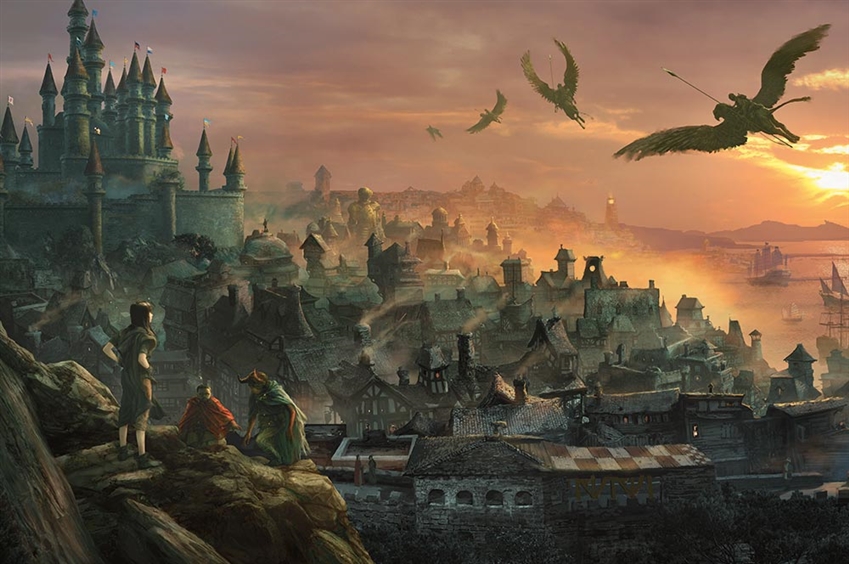
Guide the Conversation
Once you sit down with players (in-person or over a chat server like Discord or Messenger), you should be prepared to start the conversation with a question. Usually it’s good if your opening question is broad and open-ended, like: “What does your character think about their hometown?”
If your player starts talking and it’s clear they’ve thought a lot about their hometown or homeland, that’s golden! You can just sit back, let them talk, and take notes—and maybe even be prepared to answer a few questions they have for you.
Odds are, however, this conversation will be a leisurely back-and-forth between you and your player. You’ll ask a question like:
- Are there any people in town that your character is close with, either as a friend or an enemy? Who are they, and what do they do?
- Are there any important landmarks near your home, like a giant standing stone or a marsh that no one emerges from alive?
- What peoples live in and around your home?
- What kind of beasts and monsters live in the wilderness around your home? Have any been domesticated?
If this player is reluctant or unsure, providing more examples (like in the second point) can help. If a player really seems unsure of what they want, start to ask leading questions. Pose an answer in the question, like “There’s a swamp near your town that few people emerge from alive. Have you ever been in the Swamp of Despair?”
This limits the variables that your player has to think about, and can make it easier for them to answer. It could also shock the player into saying something like, “Hey, that doesn’t sound right. I don’t think my town would have been close to a death swamp.” That’s perfect—it means that they do have an idea of what they want, they just don’t know how to express it. Follow up on this. Ask them what sort of dangerous landmark is near their hometown. Sometimes it just takes a little oil to get the creative wheels turning!
By the end of a brainstorm session like this, you may have a name for a town in your campaign setting, a few story hooks and dangerous locations, some ideas for monster lairs, and maybe even political details like the church system in that region, who rules the land, and how wealthy that land is. Look closely at the sort of details your players tell you; those are the things they’re interested in, the things they want to explore more deeply in the campaign.
If you have a player that really enjoyed brainstorming and worldbuilding with you, consider doing more one-on-one worldbuilding or even some one-on-one roleplaying with them. Taking time to talk and RP with my players one-on-one has deepened my connection with my characters and my setting tremendously over the course of this campaign!
Sometimes, though, a player just isn’t interested in doing worldbuilding. That’s fine, don’t force them to. They may not be interested now, but maybe they’ll have a revelation later on in the campaign once they know their character better. Maybe they won’t ever be that interested in your world. Or maybe they love your world, but just aren’t interested in doing any worldbuilding. You have to decide for yourself if that’s a deal breaker for you in the DM-player relationship. You’re not a jerk for asking a player to leave your group if they aren’t engaging in the game in a way that’s fun for you.
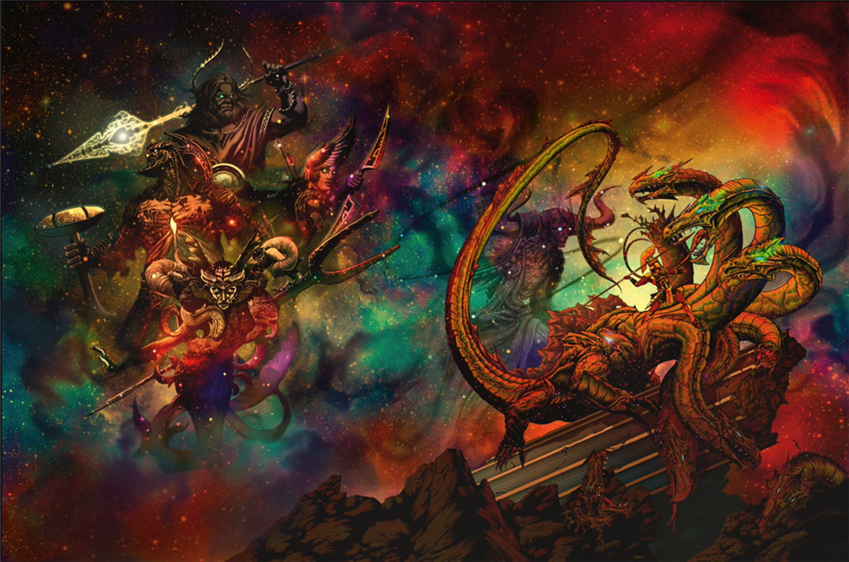
Make Your Worldbuilding Document Accessible
Worldbuilding in this way is a constant, ongoing process. Because of that, it’s important that you make your worldbuilding documents easily accessible to the players in some way or another. There are some sites that allow you to make “wiki-style” interlinked encyclopedia pages for characters, locations, and other important things within your campaign. These can be useful, but I honestly feel like performing upkeep and the urge to make these pages look “professional” makes them more trouble than they’re worth.
I use a Google Drive folder to organize all my worldbuilding documents for my party. That way, they can look at what we’ve created together at any time. If they have something to add, they can either leave a comment on the doc, or message me on Discord to say, “Wouldn’t it be cool if…?” Then we can have a short worldbuilding brainstorm and add what we created to the worldbuilding doc later. Any information I want to keep secret, I either keep in a private folder, or keep solely in a separate campaign notebook.
Keeping information private is obviously important as a DM. Huge plot revelations can make your story more dramatic and exciting, and you don’t want leave your plot twists out in plain sight. However, storytelling in D&D is a collaborative act. If you were a TV showrunner assembling a writer’s room, you wouldn’t keep your writers from seeing the show’s setting bible. When you’re playing D&D, you and your players are telling a story together. Give them the tools they need to be a collaborator, not just an audience member.
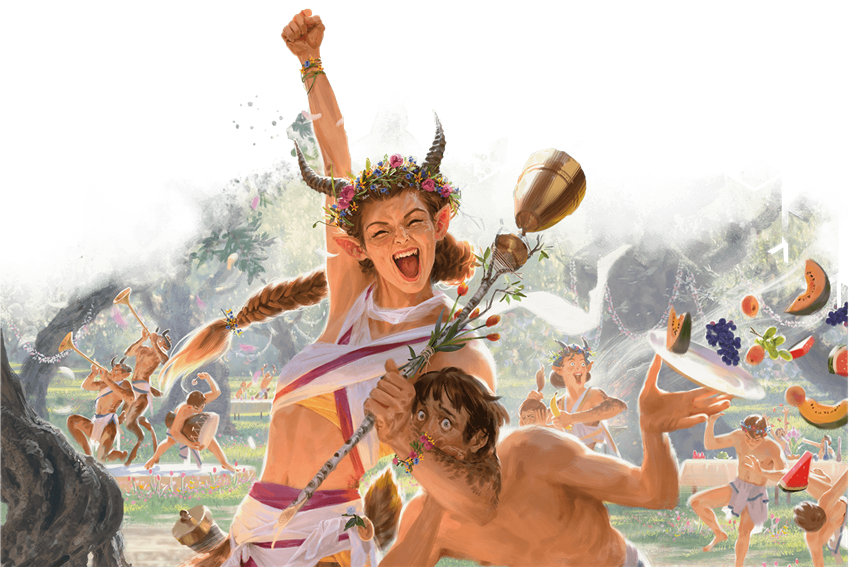
Have you ever created a world collaboratively with your players? Tell us about it in the comments!
Create A Brand-New Adventurer Acquire New Powers and Adventures Browse All Your D&D Content
 James Haeck is the lead writer for D&D Beyond, the co-author of Waterdeep: Dragon Heist, Baldur's Gate: Descent into Avernus, and the Critical Role Explorer's Guide to Wildemount, a member of the Guild Adepts, and a freelance writer for Wizards of the Coast, the D&D Adventurers League, and other RPG companies. He lives in Seattle, Washington with his fiancée Hannah and their animal companions Mei and Marzipan. You can find him wasting time on Twitter at @jamesjhaeck.
James Haeck is the lead writer for D&D Beyond, the co-author of Waterdeep: Dragon Heist, Baldur's Gate: Descent into Avernus, and the Critical Role Explorer's Guide to Wildemount, a member of the Guild Adepts, and a freelance writer for Wizards of the Coast, the D&D Adventurers League, and other RPG companies. He lives in Seattle, Washington with his fiancée Hannah and their animal companions Mei and Marzipan. You can find him wasting time on Twitter at @jamesjhaeck.








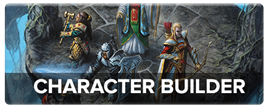
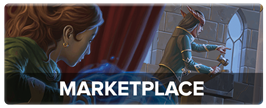
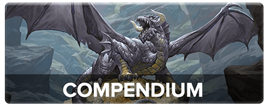
-
View User Profile
-
Send Message
Posted Jul 1, 2020First post!
Great article, James. You never let me down with these, and they've been really helpful to me.
-
View User Profile
-
Send Message
Posted Jul 1, 2020Thanks for all the great work and ideas James.
-
View User Profile
-
Send Message
Posted Jul 1, 2020Great article! I've honestly never thought about having my players help with worldbuilding, but now I think I'll do so!
-
View User Profile
-
Send Message
Posted Jul 1, 2020There are tons of tools out there to guide collaborative world-building. Either check out the way FATE builds it's settings collaboratively, or Microscope and its derivatives, or Beyond the Wall. They serve to lend structure to the process. Sometimes you have to set down some rules, like "in the end it should be a playable setting supporting the people and classes from the PHB", but that's easy to manage. Over the past years, I've used frameworks or tools like these to build a number of settings.
The process described in the article is a lot more freeform than that. Which is obviously just as fine.
Giving the players some guidance on how to proceed even leads to unexpected results. I've got a player in my group who usually plays dwarven fighter champions, and is mostly along for the combat encounters. But enable him to contribute to collaborative world-building, and he is suddenly very invested in the game, has fun, and stays interested and engaged.
Giving players a voice in world-building might turn up unlikely ideas and reveal interests where none seemed to exist before.
-
View User Profile
-
Send Message
Posted Jul 1, 2020This is such a cool idea, and I had been thinking about how I would decide on what region to set my next campaign in. I will ask my players! Thanks for this James.
-
View User Profile
-
Send Message
Posted Jul 1, 2020Yah
-
View User Profile
-
Send Message
Posted Jul 1, 2020Microscope blew my mind the first time I read it. It absolutely exploded my D&D-centric idea of what a roleplaying game could be. It's so different that finding a group to play it with can be challenging, but I would recommend that everyone who liked this article try out Microscope someday. Pure genius.
-
View User Profile
-
Send Message
Posted Jul 1, 2020And James.... Any hint of how soon class 101 will be back
-
View User Profile
-
Send Message
Posted Jul 1, 2020Great article.
+1 to everyone who mentioned Fate Core's world building method. It's in the same spirit as above. Even better: Spark in Fate Core. The creators of the games Spark and Sig apply their collaborative world building method to Fate Core's campaign structure. The method translates really well to DnD. You create specific places, specific history, people you would find there, the big issues of the world, all from suggestions from the the players. They really gain ownership of the world that way.
You can also use the parts of the Spark method that are useful to you. I've modified by filling in the parts of the world that the campaign already sets out, and asked only for inspirations from the players so I can give the campaign a flavor that speaks to them. This way I was able to personalize the adventure with hooks that they found relevant.
I've also been able to use the method to expand or abandon published campaigns, using the information from the campaign as well as the world-building contributions from the players to allow the players more freedom to explore outside the prescribed world of the adventure. Throw in a few Dungeon World fronts to keep track of everything going on, and getting sidetracked by curious and adventure hungry players is easy as pie!
Whether making a full campaign setting from scratch, filling in the holes of an existing campaign, or even just from making sense of a published campaign, giving it structure, using the above organization methods (Spark in Fate Core, Dungeon World Fronts, collaboration with Players) is the way to go!
-
View User Profile
-
Send Message
Posted Jul 1, 2020What is Microscope? I tried the google machine and got the obvious results. Does anyone have a link or more specific search criteria?
-
View User Profile
-
Send Message
Posted Jul 1, 2020This is an awesome article. I love finding ways to create worlds from the backstories of my characters. Reminds me of the “spiral campaign” and other tips that Sly Flourish’s Return of The Lazy Dungeon Master provides.
-
View User Profile
-
Send Message
Posted Jul 1, 2020Try searching for the Microscope RPG by Ben Robbins. =)
-
View User Profile
-
Send Message
Posted Jul 1, 2020Good article! Funnily enough I'm running a Genesys campaign right now where I basically had everyone sit down and say "let's build a world"...and they spent hours brainstorming with pretty much no input from me. It was awesome!
-
View User Profile
-
Send Message
Posted Jul 1, 2020I am running my first ever campaign and I have made a setting for it. I am trying to actively involve my players and this article has been very helpful! My players are all interested in world-building and one in particular is a fellow world-builder whom I can brainstorm with :)
-
View User Profile
-
Send Message
Posted Jul 1, 2020Great article, with lots of excellent ideas! I'm a first time DM who just dove right in to a homebrewed campaign! I started off with just a few "hooks" to the story and have tried to fill in the gaps from there based on players' interests and personalities. I didn't so much as consult them about their hometowns per se, but rather built fantasy versions of the actual places that they're from (and have map-wise set them about the same relative distances apart), which I think helped them feel some sense of attachment to those places in the game, and saved me some time trying to map out and design economies for several cities!
I also have an Evernote with documents for all the players to access and edit! Funny how I seem to be the only one making edits though...
-
View User Profile
-
Send Message
Posted Jul 1, 2020Being the only one writing in shared documents truly is the Dungeon Master's struggle. Set up tools optimistically, but steel yourself for the most realistic outcome.
-
View User Profile
-
Send Message
Posted Jul 2, 2020Very nice article. It really hooked me in when you made the statement "Maybe someone else in your group is secretly a fellow worldbuilding buff and you two will go off and brainstorm together for hours, but let’s be honest, that’s a pipe dream." That's exactly what myself and one of my DMs are doing right now; we're working on a world loosely based on Middle Earth as we're both Tolkien fans, and it gives us points of reference. When we say to each other, go to Rivendell and talk to Elrond it's more common points of reference, than literally going to a valley in the misty mountains and speaking to an elf named Elrond.
There's a lot about Tolkien that doesn't work for us and our group though (such as very low magic) so that all has to be adjusted. Races need to be adjusted. What pantheon do we use? What's the history of the land and how did the nations get to be what they are? How are the relations between the various nations? It's fun to just bounce ideas off each other as to what works and what doesn't, or how to do certain things that sound cool.
-
View User Profile
-
Send Message
Posted Jul 2, 2020The "Worldbuilding with Legendary Monsters" link goes to "Worldbuilding through Encounters" by mistake.
I believe it should go here: https://www.dndbeyond.com/posts/777-worldbuilding-with-legendary-monsters
-
View User Profile
-
Send Message
Posted Jul 2, 2020Thank You for one more great advice!
Does anybody know about app in which you can add categories and then search through them? What I want is the app where I can put my homebrew weapons (for dnd and other games) and such items and then search through them by categories I added (weapon type, armour class,...)
-
View User Profile
-
Send Message
Posted Jul 2, 2020Me and my players just started building a world yesterday. It started off just the forgotten realms with a few of their home-brew races, but we started changing things around and well...